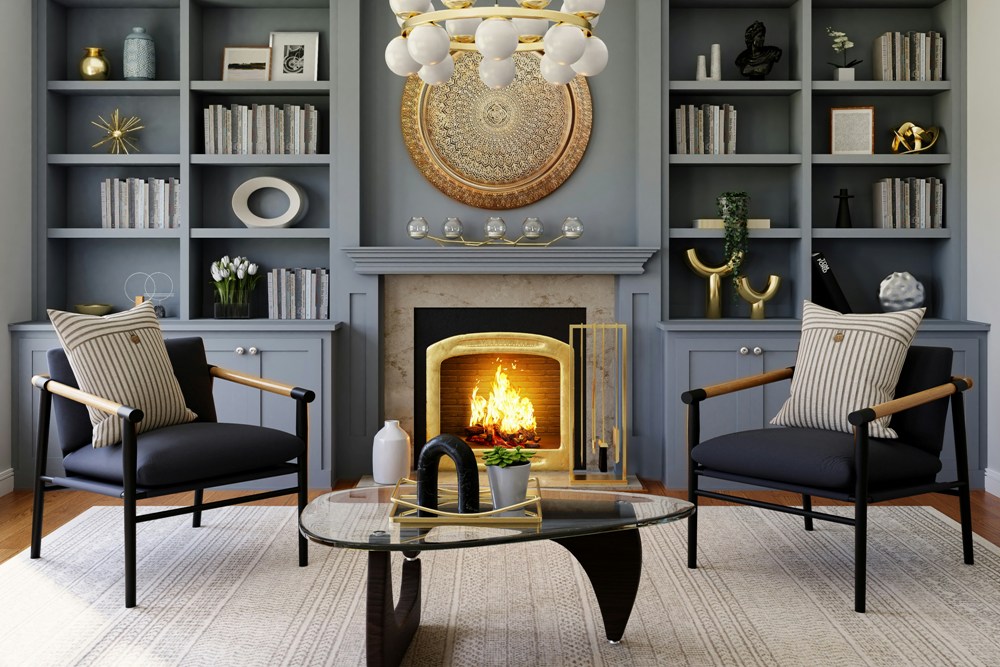
Creating a healthier home environment involves more than keeping a house clean. It requires thoughtful design choices, an awareness of hidden pollutants, and a dedication to routines that promote long-term well-being. A home should serve as a sanctuary where comfort, safety, and vitality align. By considering how air quality, light exposure, and daily materials affect health, a living space can transform into a supportive environment that nurtures energy, relaxation, and balance.
Air Quality and Ventilation
Fresh air circulation is essential to any healthy home. Indoor spaces often harbor invisible irritants, such as dust particles, mold spores, and volatile organic compounds released from paints, furniture, or cleaning products. Opening windows when weather permits, pairing natural ventilation with high-efficiency air purifiers, and maintaining heating and cooling systems all reduce these risks. Plants like peace lilies and snake plants can complement filtration systems by absorbing certain airborne toxins. Properly sealed ductwork and regular filter replacement ensure that the air entering each room contributes to comfort rather than contamination.
Light Exposure and Design
Natural light is more than a design feature; it influences circadian rhythms and overall mood. A home that maximizes daylight through skylights, larger windows, or reflective surfaces provides energy during waking hours while reducing dependence on artificial lighting. Evening illumination also matters, since bright or blue-toned light can disrupt sleep cycles. Softer, warmer bulbs encourage relaxation and create a calming atmosphere. Incorporating dimmer switches and layered lighting gives residents flexibility, enabling them to adjust brightness depending on the time of day or activity. Thoughtful window treatments that filter, rather than block, sunlight further enhance interior ambiance.
Materials and Furnishings
Every surface inside a home contributes to the overall environment, and the materials chosen can either promote wellness or undermine it. Upholstered furniture, flooring, and cabinetry often contain adhesives, foams, or finishes that release harmful compounds over time. Selecting low-emission finishes, untreated fabrics, and natural fibers reduces exposure. Rugs made from wool or cotton and wooden furniture finished with plant-based oils support both aesthetic appeal and air quality. Even small decisions, such as replacing synthetic curtains with breathable linen or cotton, affect how clean and comfortable a room feels. Practical investments in non-toxic cleaning solutions ensure surfaces remain healthy without introducing harsh residues.
Technology and Protective Measures
Modern life often requires balancing convenience with safety, especially when technology fills every corner of a household. Electronics contribute invisible elements such as electromagnetic frequencies, which some households address with EMF-protective clothing or shielding materials around high-use devices. Beyond electronic influences, smart sensors monitor carbon monoxide, radon, and humidity levels, offering real-time feedback that supports informed decisions. Upgrading to energy-efficient appliances reduces waste heat and minimizes harmful emissions, while also cutting costs. When technology enhances awareness without overwhelming the senses, it becomes a tool that protects well-being rather than a source of concern.
Habits and Daily Routines
The routines practiced within a household influence long-term health as much as the physical structure. Maintaining consistent cleaning practices, such as laundering bedding in hot water to eliminate allergens or vacuuming carpets with HEPA filtration, protects against dust mites and irritants. Cooking habits also play a role, since ventilation during food preparation prevents lingering odors and reduces harmful particles. Hydration and nutrition benefit from clean, filtered water systems that eliminate impurities and preserve beneficial minerals. Even noise control, achieved by insulating walls or using soft furnishings, creates a calmer environment that supports rest and focus. Simple, repeated actions accumulate, creating lasting improvements that shape overall quality of life.
Transforming a residence into a healthier space requires attention to both visible and invisible details. From optimizing air quality and light exposure to selecting natural materials and adopting protective measures, every choice contributes to the overall atmosphere. Daily habits reinforce these efforts, turning a house into a place that sustains vitality and comfort. A healthier home is not the result of a single decision but of a series of thoughtful adjustments that combine to create balance, beauty, and resilience for years to come.
EDITORIAL POLICY
The Flash List is dedicated to providing trustworthy editorial content by maintaining strict ethical standards, journalistic integrity, and credible professionalism regardless of any remuneration as working media. The Flash List is not affiliated with third-party companies mentioned and makes no endorsement or guarantee expressed or implied. The preceding article, which contains affiliated link(s) for which compensation was received, is intended for informational reference only and does not constitute advice of any kind. Moreover, a qualified professional should be consulted regarding any lifestyle consideration, medical treatment, or monetary transaction, etc. Content is published in accordance with USFTC regulations and terms and conditions.
MORE ON THE FLASH LIST
































